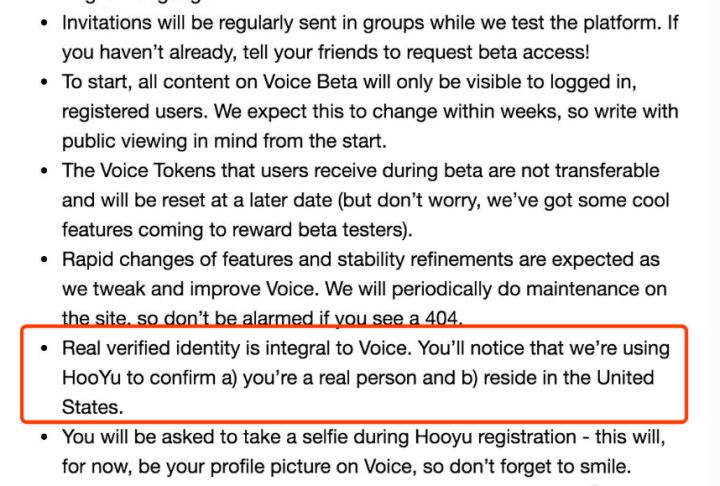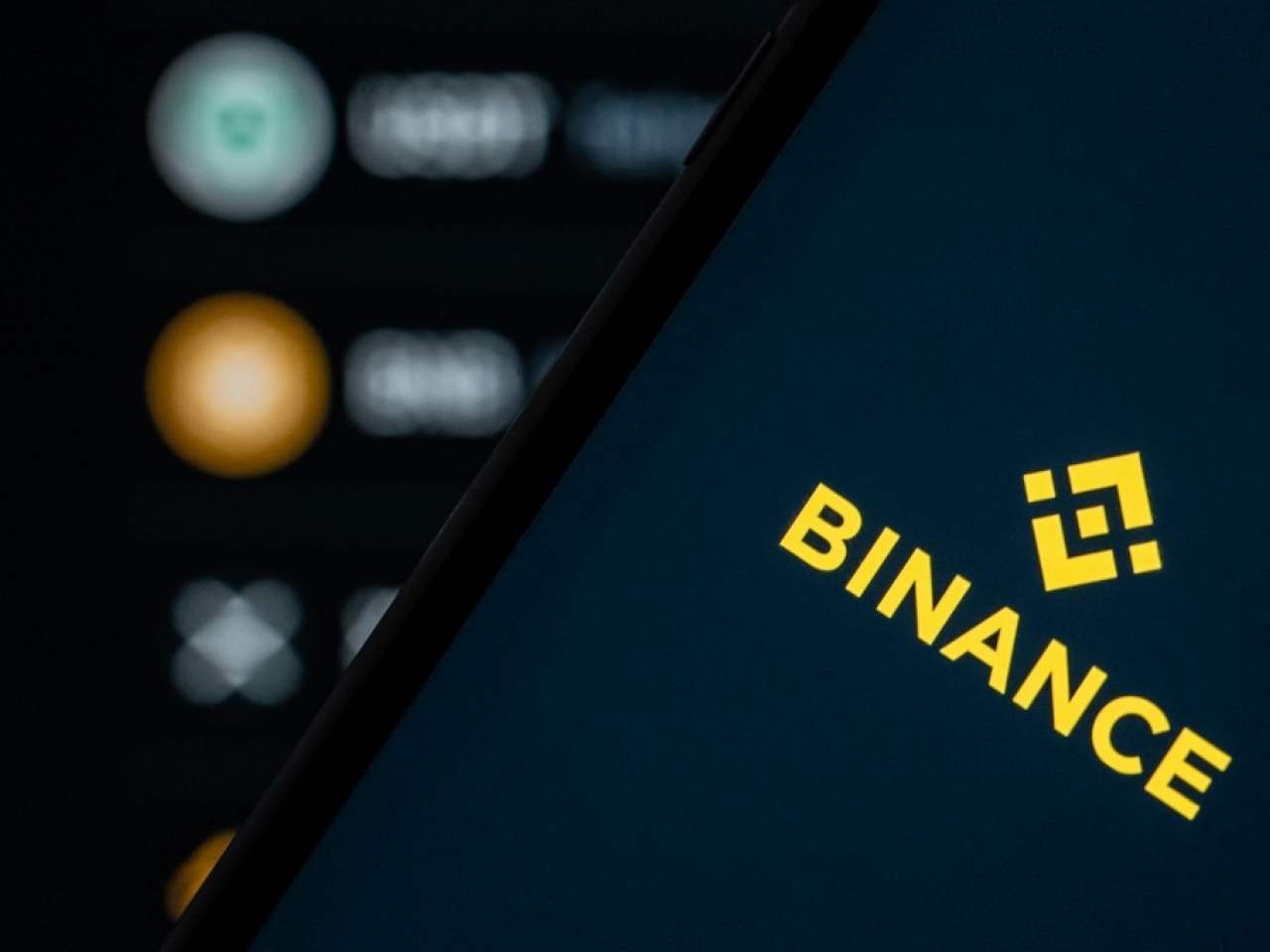Without Voice in China, still say "game changing"?
On this Valentine's Day that is so deserted that no one in the circle of friends can transfer money, EOS founder Daniel Larimar (net name "BM") has become the protagonist of the cryptocurrency industry. The decentralized social platform he created in 2016, Steemit, On this day, it was announced that it had been sold to Sun Yuchen, who was recently addicted to acquisitions, and his newly created decentralized social platform Voice announced the Beta version on this day.
Voice, which has been warming up for almost a year, is here. This product, which BM calls "applications that will change the industry landscape," was launched on February 14 as scheduled. The first area to be opened was the United States. Just as EOS needs domestic support, Voice without Chinese support will certainly not change the industry landscape.
According to the descriptions of the official websites of BM and Voice, Voice is a social network application similar to Twitter based on the EOS network. Users can post content on Voice and get VOICE token rewards when they interact with others. They can also use tokens to interact with other people. This common token reward circulation model supports this application.

- The loan agreement bZx was manipulated to make "Lightning Loans" popular, and to understand the secrets of Lightning Loans that must be repaid in 13 seconds
- Will Bitcoin price eventually break through $ 10,000? There are three things to consider here
- A week in review | A number of listed companies publicly disclosed the layout of the blockchain; 6 weekly financing totaled nearly $ 70 million
It can be seen from the pictures that in the Voice Beta version, each account seems to give away 3,000 VOICEs for users to use. The calculation method of the specific rewards has not been exposed for the time being, and the amount of users temporarily is not clear. However, it is observed that Voice is an open network, not as closed as the circle of friends, anyone's Voice can be seen. About 10 hours after Voice went online, there was a video recording of a mobile phone screen showing that BM, the Voice account of the founder of Voice, had 63 followers and received 3000 VOICE tokens.
It can also be seen from some U.S. participants who tweeted pictures and videos on Twitter. Voice's interface is very similar to our common social interface. The feed stream mode, picture + text display, comment likes display, the only difference. What's more is the display of how many VOICE tokens this Voice has received. In general, it is a simple version of Weibo + Changwen blog.
In addition to the simple interactive circulation of VOICE tokens, there is also a use similar to "sticky", called "Voice it". There will be topic categories on Voice. In each category, users can "pin" their content. Pinning requires some VOICE tokens. And when other users want to pin their own Voice, they need to pay more VOICE tokens, and the fees of the previous users will be refunded, and there will be additional VOICE rewards.
It is not clear whether the specific bonus ratio is fixed, but this gameplay is obviously a FOMO mechanism, but this FOMO mechanism is not as obvious as the previous FOMO game for making money, but it is also the latter user ’s The payout is greater than the previous one, and the previous user has an additional reward game.
For the moment, this design is probably the most distinctive feature of Voice, a social application. This design is also very similar to the views expressed by BM when introducing Voice. He believes that people need to make their own voices. In Voice, sticking to the top allows everyone to see their own Voice.
This mode effect of letting more people see their content is similar to big V forwarding, and users only need to pay for it. But there is an important limitation to this gameplay that everyone can stick to, and users need to have enough VOICE tokens.
In the early days, 2 VOICEs can be put on top, but in the later stages, it may take 2000 VOICEs. Ordinary users can't use this feature without a sufficient amount of VOICEs. And this seems to have returned to a FOMO cycle. The sooner users come, the more likely they are to get more tokens, and the advantage is greater than the latecomers.
The original intention of Voice
The original intention of the design of the Voice application, according to BM, is that the fake social accounts on the current social platform are unrestrained, and fake news is constantly emerging. He hopes to have a social platform without fake accounts and news.
So what does Voice user KYC do?

Voice mentioned in a previous email to users that HooYu will be used to make this important KYC tool. How does HooYu authenticate?
According to the official process provided by HooYu, users need mobile phone numbers, social accounts such as Twitter / Facebook / INS / Google, self-timer, driver's license / identity card and other identity certificates to finally confirm their real identity.
HooYu's authentication method looks really strict. Although every link can be faked, the cost of cross-country fraud is much greater. It cannot be said that there will not be fake accounts in Voice, but under such a complicated KYC, the probability of a large number of fake accounts will be smaller than the current social platforms. But this brings up another question. Under such complicated authentication, do users still want to use the Voice platform?
In order to attract traffic, the logic of user registration for most platforms is as simple as possible. Users get started in one step, and even log in directly with other social accounts. There is no registration cost, and users are happy to accept it. However, under HooYu authentication, users are required to actively submit several copies of their privacy materials to a new social platform. Some users may not accept it, and the cost of user migration is unimaginable.
Voice pain points
The social field has always been a battleground for Internet giants. The difficult part of this battlefield is that the cost of user migration is huge. If there is not enough attraction, it is difficult for users to be interested in the new platform. The oasis of Weibo and Tencent's friends are very good. For example, WeChat with 800 million monthly jobs cannot transfer users to the new Tencent social platform, which shows that it is difficult for users to migrate in this field. Even if the original platform already has a large number of users, the more common features of the new platform simply cannot attract users to migrate.
For many years, only the Douyin product can obviously steal WeChat traffic from the time of users who originally belonged to WeChat, because the content form of short videos is more eye-catching than text pictures. In turn, after Tencent started to develop short videos, multiple short video platforms such as WeChat Online were still unable to let users leave Douyin. It is impossible for new social platforms of the same type to steal users from old platforms.
The blockchain industry is actually an Internet product. The only successful social product so far is Telegram. Because encrypted chat is a pain point for users and users do not want their chat content to be known to others, Telegram is developing rapidly.
The core pain point of Voice is to provide a social platform without fake accounts and fake news. Is this a pain point for users? It is true that the impact of fake accounts and fake news is very serious now, but this pain point is so serious that users cannot bear it and must migrate to the new platform? Probably not yet.
During the Wuhan epidemic, fake news continued. Tencent deliberately built a rumor platform for this. All the latest news will be verified by Tencent at the first time, and true, false, or doubtful judgments will be given at the fastest time for your reference. Obviously, in extreme cases, a credible institution can let everyone judge the truth of the current information. It is theoretically possible to mitigate the impact of fake news on user experience on existing platforms. So what is Voice's core competitiveness?
Voice tokens
At present, only one VOICE token is seen in the Voice application. Users use one token to complete all functions. The advantage of this thing is that all the value of the platform will only be attached to this one token. On the other hand, the VOICE token How is the currency stable? In other words, how to prevent users from leaving due to falling prices of voice?
On the Steemit platform, which is a social platform just acquired by Sun Yuchen, BM has designed three token mechanisms to operate in the Steemit system. Steem is the core, Steem Power is similar to shares, and can be converted to Steem. Steem Dollar is a bond. The three-currency system is extremely complex. The three have their own functions and do not conflict.
The original purpose of the BM design is probably to stabilize the reward, and not to cause user loss due to fluctuations in one of the functions. The problem is that the mechanism is too complicated for users to understand, and the three-currency mechanism has not stabilized the price. Steemit has fallen from a project that once ranked third in market value to just now entering the top 100.
Voice's tokens are obviously much simpler, and there are no applications and prices now. These follow-ups will definitely enrich the ecosystem, but if the price of VOICE cannot be stable or continues to rise, whether users will continue to stay on the platform is unknown.
Decentralized social platforms are no longer a rare concept, but BM's Steemit is indeed one of the most successful platforms at present. Not surprisingly, under its personal influence, the scale of the Voice platform will not be too bad. He bought it last night. 50% of the RAM on the EOS market also convinces us that he really has high hopes for Voice.
However, the accident still happened. On February 15th, Weibo exposed BM and previously commented on the epidemic on Twitter, which once caused a change in domestic sentiment. On the one hand, it shows that BM is still hot, and on the other hand, it also shows that as a public figure, you should be more cautious about speech.
Some domestic media refused to report on EOS because of this. Soon he apologized for the incident, and the popularity of the media declined. This is probably the significance of social media.
Looking at the field of socialization, the cost of user migration is unimaginable. From picture text to current video socialization, everyone is looking forward to what kind of iteration of socialization will take place after the arrival of 5G. Blockchain?
We will continue to update Blocking; if you have any questions or suggestions, please contact us!
Was this article helpful?
93 out of 132 found this helpful
Related articles
- How much can the highest price reach before Bitcoin is halved? This is the answer we collected
- Ethereum developers propose EIP 2515, suggesting that "difficulty freeze" replace "difficulty bomb"
- Bitcoin ABC will include BCH miner donation plan in May, donation ratio changed to 5%
- Opinion | Why is ConsenSys the best target for a JPMorgan acquisition?
- God V's latest speech: Ethereum "can definitely survive" without me
- One article explains the reasons and subsequent effects of changing the consensus mechanism of Ethereum 2.0
- Ethereum gas usage reaches a new high in one year, helping the currency price continue to rise





